Stainless Steel Machining 101 – The Ultimate Beginner’s Guide
Machining stainless steel is important since it is a necessity in fields where strength, durability and resistance to corrosion is not a negotiation. If you are in the aerospace industry or medical or consumer goods, you will probably be handling this tough material. That is why it is crucial to know how to machine it correctly. Otherwise, you can damage tools, finish badly or spend lots of money reworking. This guide will take you through all the aspects of stainless steel grades, machining, the most common problems and professional advice. In the end, you will be well equipped on what to do with stainless steel in the smartest way.
Table of Contents
ToggleWhat Is Stainless Steel?
Stainless steel is an alloy of iron with a minimum of 11 percent of chromium. You will also find additions of such elements as nickel, manganese, carbon, and molybdenum in order to improve certain properties. Chromium is important- reacting with oxygen to form a thin passive layer of oxide which protects the surface against corrosion. This is the reason why stainless steel is not prone to rust and it can be used in day to day activities as well as in challenging industrial purposes.
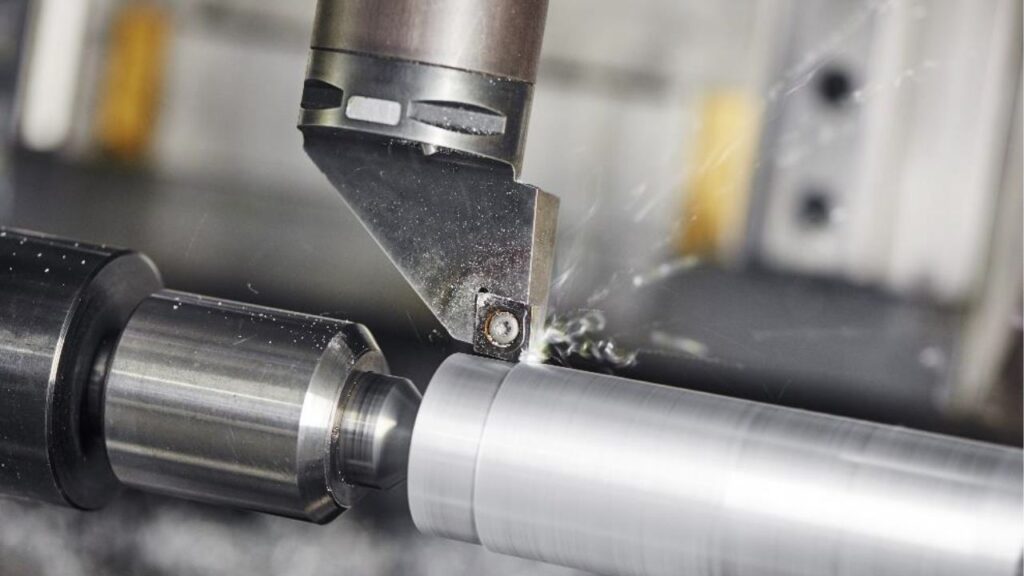
Key Properties
- Corrosion resistance: Stainless steel does not rust or oxidize and is therefore used in medical, food-grade and marine uses. This enables you to increase the life of products even in an extreme environment of moisture.
- Extreme tensile strength: It is able to support mechanical stress without deforming or breaking. This strength renders it fit in load bearing components and structural components.
- Aesthetic attraction: The sleek shiny finish provides you with a smooth professional appearance, which is ideal in consumer products. This can be used to produce high quality visuals without extra coatings.
- Recyclability: You help sustainability since stainless steel can be recycled 100 percent without losing its quality. This will enable you to save on material wastage and cut down the cost of production in the long run.
- Temperature and chemical resistance: It can withstand very harsh conditions, and you may use it in chemical plants or engines or where temperatures are high. You even acquire stability in areas that the majority of the materials would break or wear out fast.
Can Stainless Steel Be Machined?
Yes stainless steel is machinable but you must know how it behaves to do it successfully. It is both hard and work-hardening so it needs the appropriate approach. Most custom CNC machining services use it because of its strength and corrosion resistance. To get accuracy, you should select the right type of tool, use appropriate lubrication and consider the appropriate material grade depending on the project requirements.
Types and Grades of Stainless Steel
There are more than 150 grades of stainless steel and each grade is designed to meet specific performance requirements. These grades are categorized into five major categories depending on their microstructure as austenitic, ferritic, martensitic, duplex, and precipitation hardening.
Austenitic Stainless Steels (Non-magnetic)
The most common group is the austenitic stainless steels, which are corrosion resistant and have high ductility. They will be found in areas where the cleanliness, strength and formability are significant. These steels are not magnetic and are not heat treatable but are easy to weld. When choosing a grade, take into account the following:
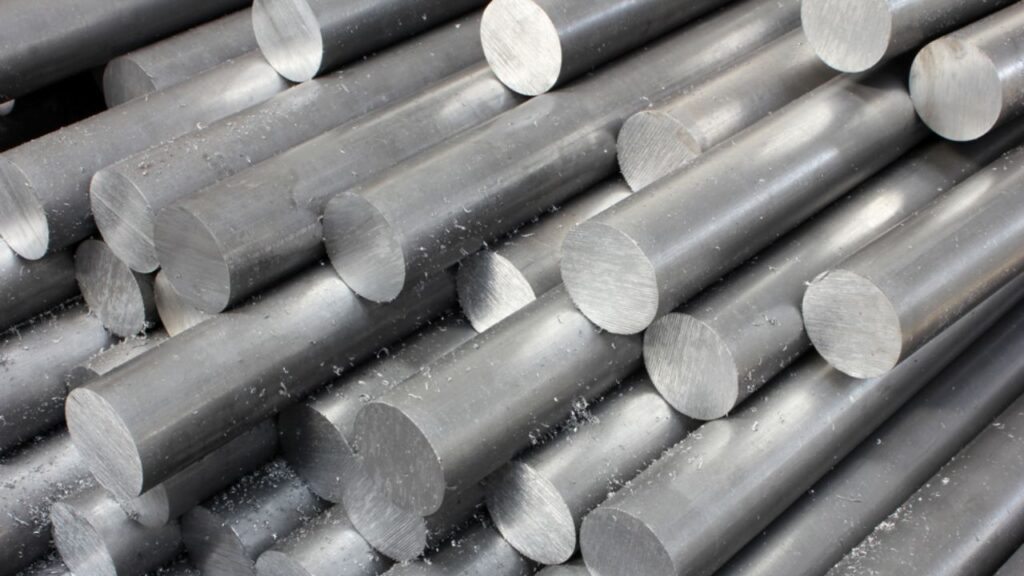
- 304
- 316
- 321H
- Alloy 20
You will usually find these applications in aerospace, pharmaceutical equipment, kitchen, and cutlery, and domestic appliances because of their clean finishing and long service life.
Ferritic Stainless Steels (Magnetic)
Ferritic stainless steels are AISI 400 series and they are a viable option when you require moderate strength and decent corrosion resistance with less expense. These steels are magnetic and with minimal or no nickel, they are cheaper than the austenitic ones. They cannot be heat-treated, however, and have modest weldability, which can affect what you can do with them. They are widely used in automobile exhaust, kitchenware and domestic appliances. Popular grades are:
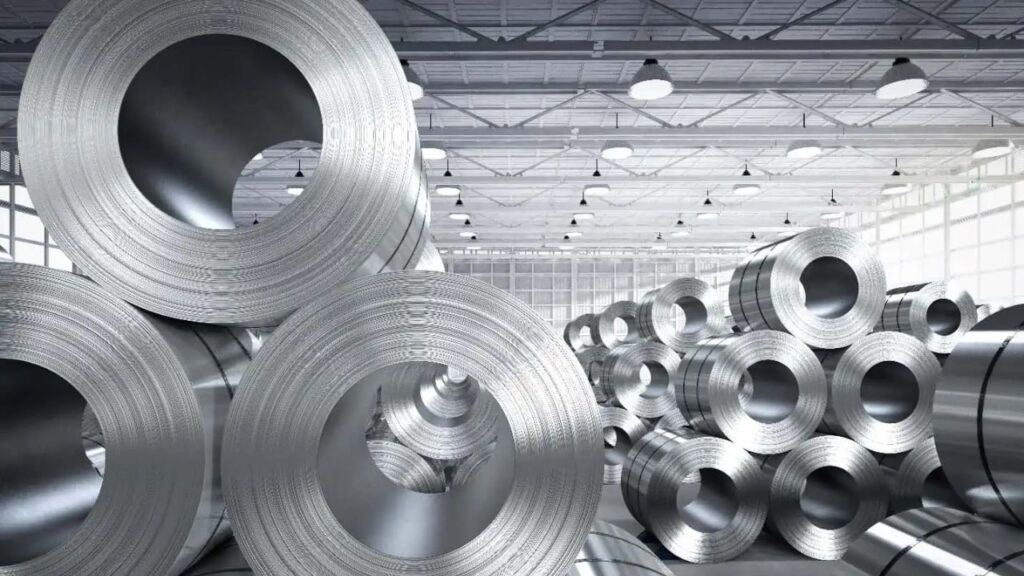
- 409L
- 430
- 447
These grades provide reliable performance at reasonable costs, especially in the case you are engaging in cost-sensitive projects.
Martensitic Stainless Steels
The martensitic stainless steels provide you with a heat-treatable, strong product to use in harsh applications. These steels offer strength and hardness when well heat treated, hence they are good in cases where wear is a concern. They will be magnetic, and their resistance to corrosion will be based on grade and alloying elements. When choosing material on precision tools or mechanical parts, they are an excellent choice. Typical martensitic grades are:
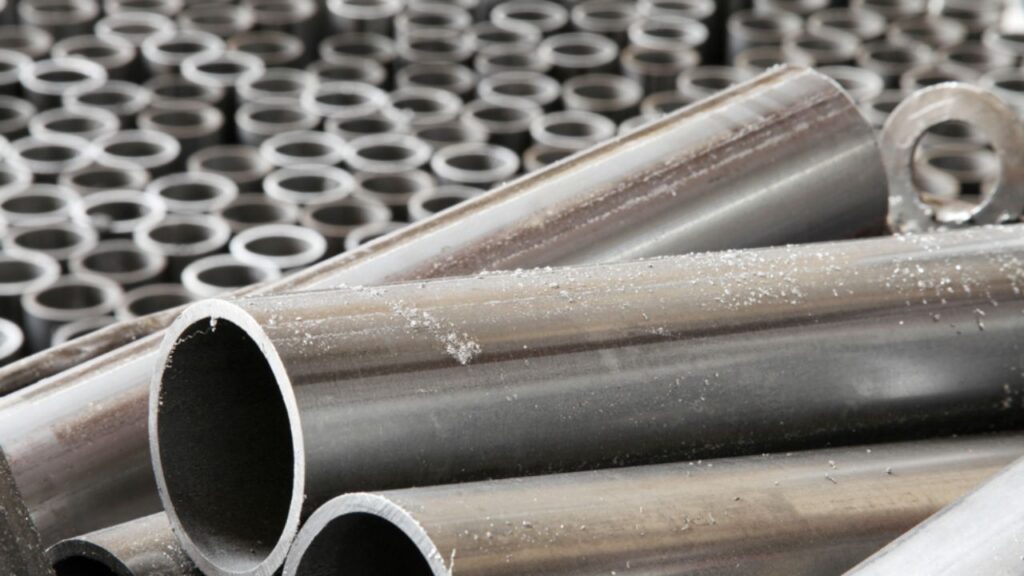
- X12Cr13
- X17CrNi16-2
- X50CrMoV15
You will generally find them in surgical equipment, high end cutlery, guns, and machine parts where strength is a must.
Duplex Stainless Steels
Duplex stainless steels are very strong and highly corrosion resistant, which makes them a synthesis of the best austenitic and ferritic structure. You will find them particularly handy when you are in need of durability without compromising weldability. The steels are suitable in offshore, marine and chemical processing because they operate in severe conditions. Duplex stainless steels are a sensible compromise when you need highly challenging materials. The common grades are:
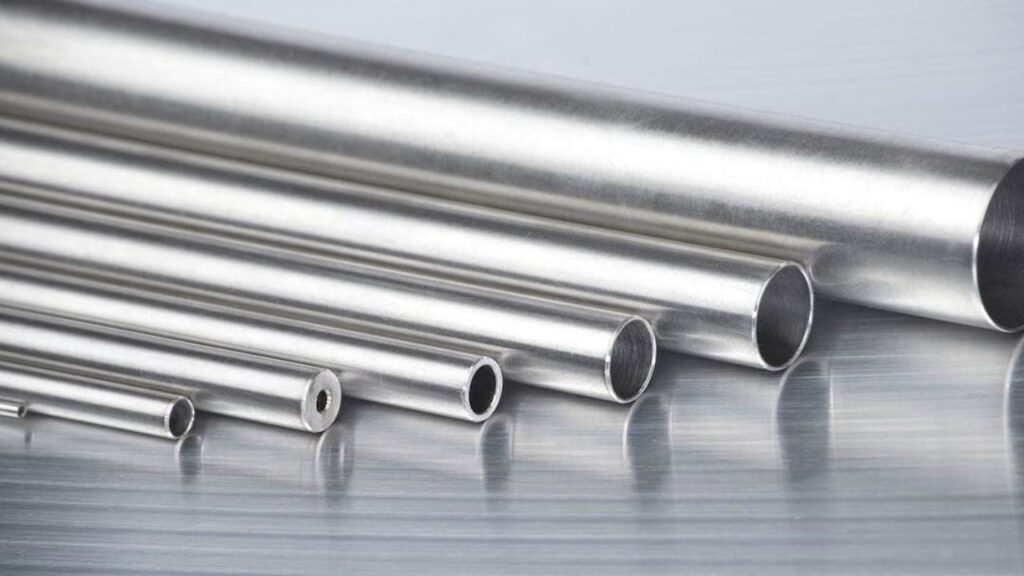
- X2CrNiMoCuN25-6-3
- X2CrNiN22-2
These grades will assist you in resisting pitting, stress corrosion and cracking providing you with a longer service life and less maintenance issues.
Precipitation Hardening (PH) Stainless Steels
Age-hardening alloys, which are also called precipitation hardening stainless steels, provide you with great strength following the heat treatment. They have a good tensile strength and relatively poor corrosion resistance compared to other alloys, thus they are suitable in highly demanding applications. They may be machined soft then hardened to final use to improve efficiency and durability. One of the most common grades that you will come across is:
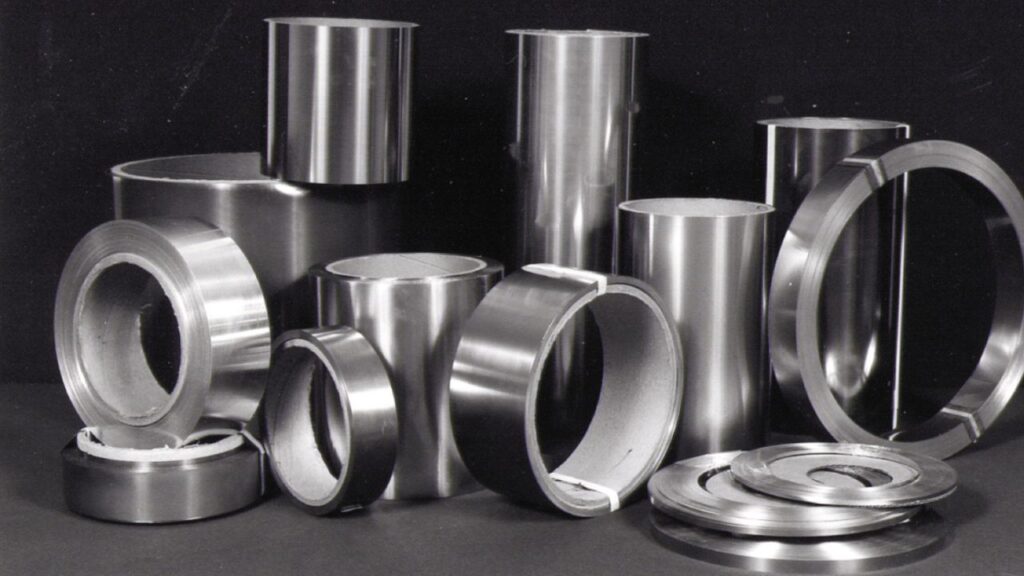
- 17-4 PH
- 15-5 PH
- 13-8 Mo
You will find them in aerospace and nuclear reactor components, military hardware where strength, reliability and dimensional stability is paramount. Select them where stress performance counts.
Stainless Steel Machining Processes
Milling
Milling is the process of a high-speed rotating cutting tool that cuts material off of a stationary work piece of stainless steel. This method is also quite good with flat surfaces and intricate 3D shapes. You need to use sharp tools and a tight set up to reduce vibration to achieve clean cuts. The tool deflection may cause imperfect finishes and low accuracy. CNC milling is the way to go when you need greater control and repeatability when working with complex geometries or surfaces of precise tolerances.
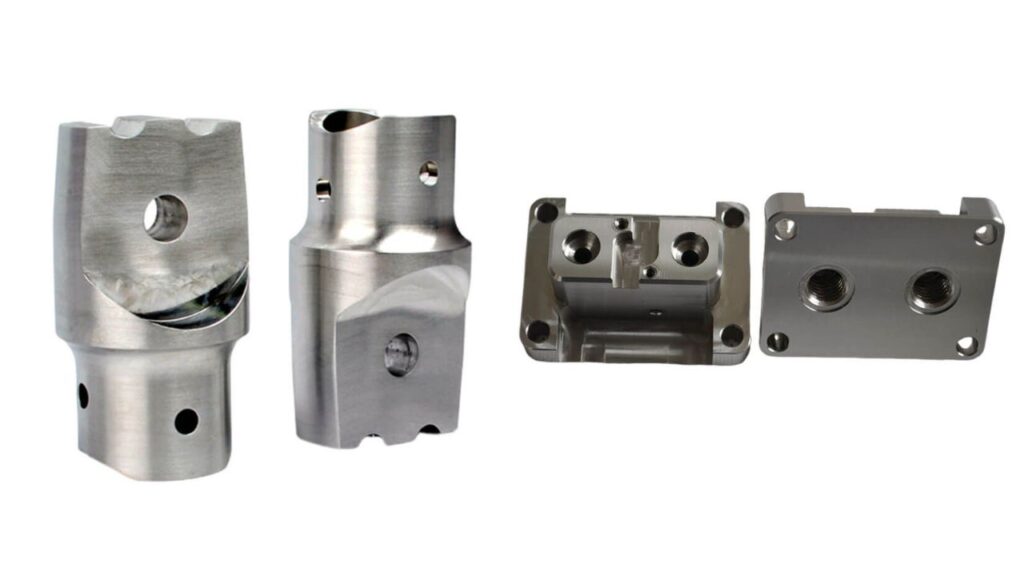
Turning
Turning would be the best option when you want to produce cylindrical components such as shafts, pins, or threaded rods. The stainless steel is rotated but the cutting tool stays in the same position in this technique. Your optimal results will be achieved by having minimal tool overhang so as to have stability and chatter is avoided. Turning is particularly effective with harder grades of stainless steel, in which work hardening and tool wear are avoided with fine speed and feed control.
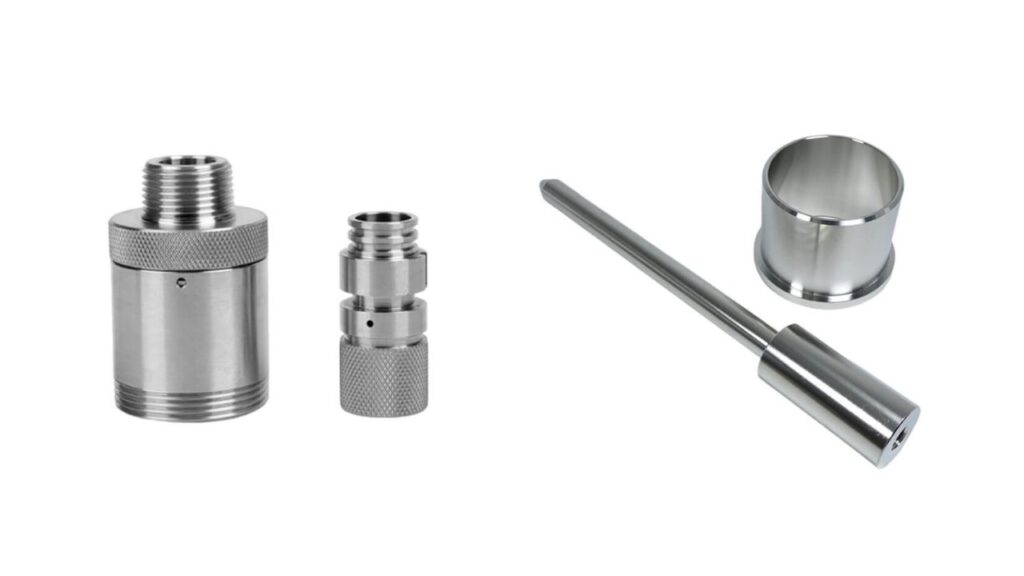
Milling and Turning
CNC machining techniques include milling and turning. During milling, you cut away material by means of rotating cutters, which are ideal to cut out intricate shapes or slots. Turning is the process of rotating the workpiece and then shaping it by a cutting tool- ideal with cylindrical workpieces. Both methods enable you to attain high precision and clean finishes. Together they offer you versatility in more complex geometries and shorter set up time. Machines will save you time and make you more accurate, as they will cover both operations.
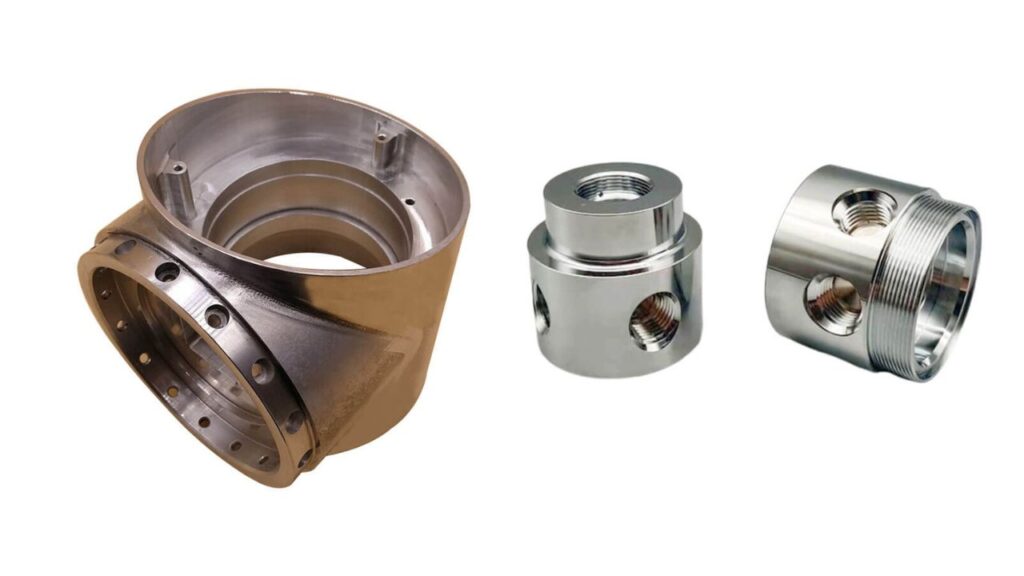
CNC Swiss Machining
CNC Swiss machining is used to manufacture small and precise parts with close tolerances. The main distinction is that your workpiece traverses along the Z-axis as cutting tools stand still or move a little. This arrangement makes it quicker and more consistent to cut slim or fragile items such as screws or pins. It will be particularly helpful in such industries as medical, aerospace, or electronics. CNC Swiss machining can provide you with control and consistency when precision, repeatability and efficiency are important.
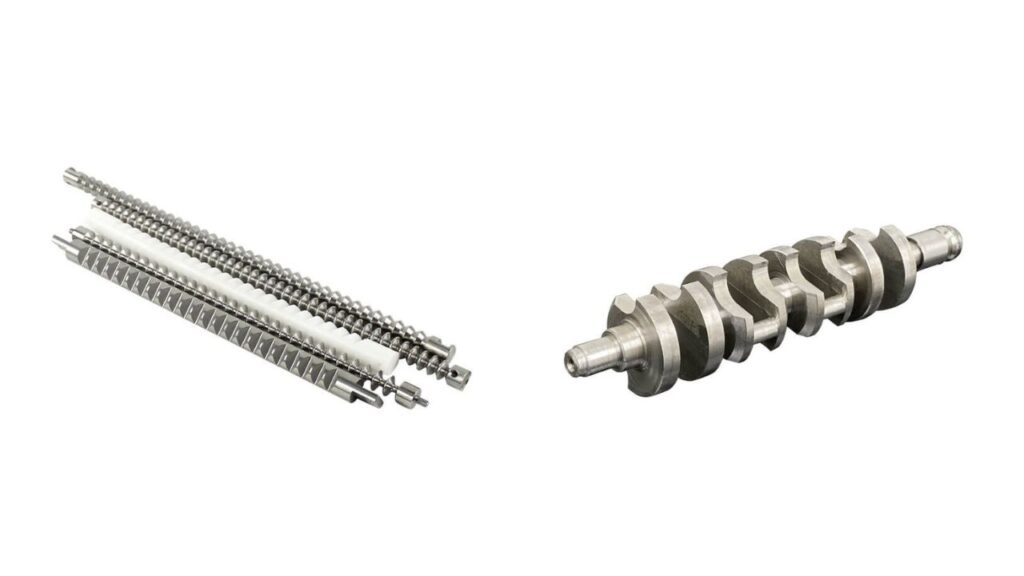
Automatic Lathe Machining CNC
Automatic lathes are ideal where there is a high volume production of turned parts. The machines are more efficient and quicker than manual lathes, and they process stainless steel. You will save time and work with less labor but not precision. This can be applied perfectly to parts that have requirements on consistency like the fittings, valves and fasteners.
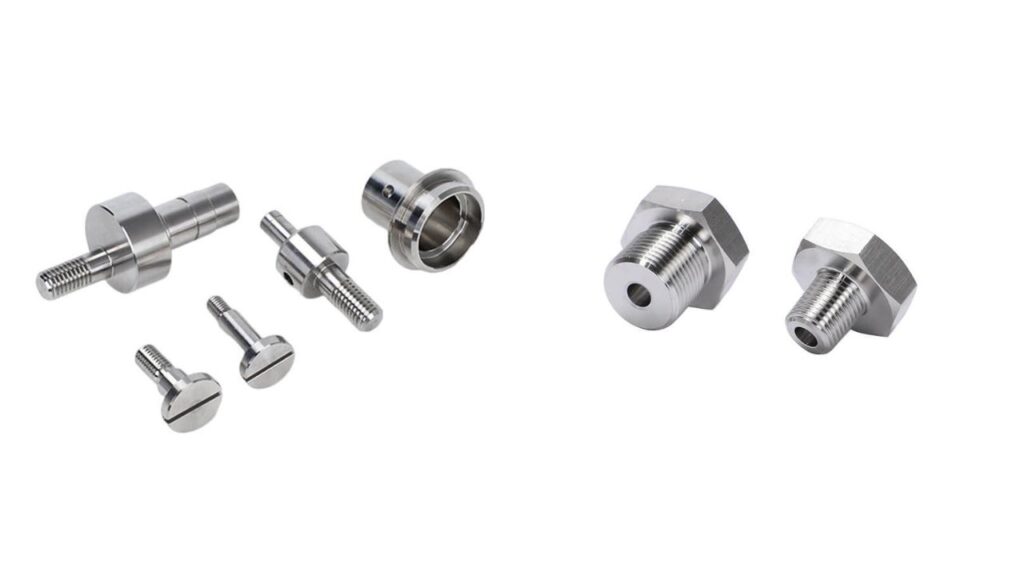
Drilling
Drilling makes accurate holes in stainless steel parts. It is normally undertaken as a secondary operation following milling or turning. You should control speed, feed rate, and coolant to get the correct results. The ability of stainless steel to work harden implies that dull drills or inappropriate settings may easily damage tools. Coated drills or peck drilling methods are ways to prevent the problems you are likely to encounter.
Threading
Threading is the process that involves cutting internal or external threads on stainless steel components. This is the process applied in the manufacture of pipes, tubes or fasteners. Be it tap and die, or thread milling using CNC machines, thread quality depends on sharp tools and regulated movement. When you are handling harder grades such as 304 or 316, pre-drilling and application of lubricants is obligatory.
Laser Cutting
Laser cutting takes place with high precision and non-contact shaping with a focused beam of light. When little distortion of material is required it is particularly applicable on thin stainless steel sheets. You will enjoy low tool wear, short finishing time, and close tolerances. This is a good technique in the case of elaborate patterns or runs of small parts.
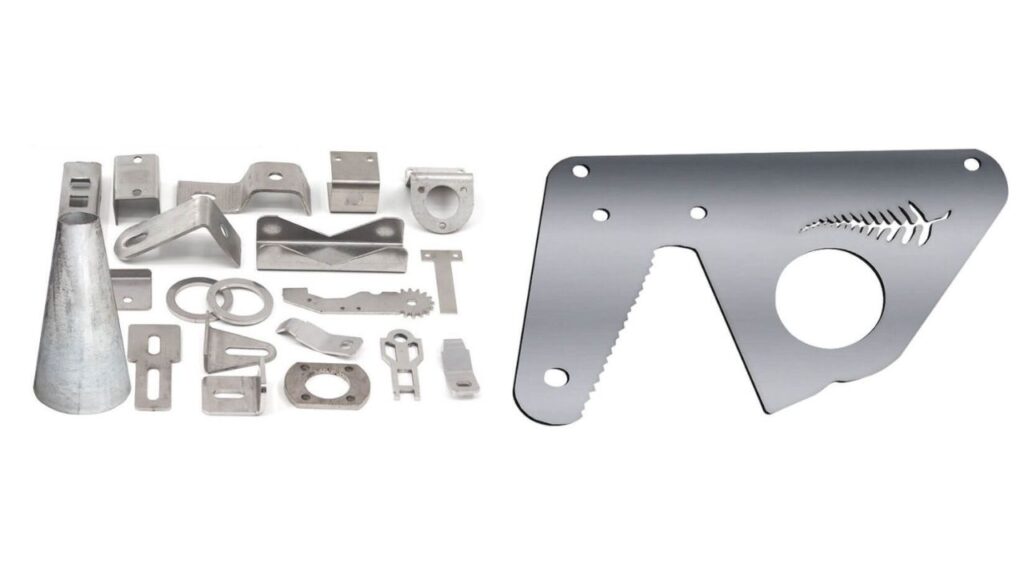
Grinding
Grinding enhances the surface finish and removes the burrs following initial machining. It is normally applied during the final stages prior to assembly. You can apply it when you need flatness, smooth polish, or smooth edges. Grinding assists in the production of close tolerances and also improves the cosmetic attractiveness of stainless steel components.
EDM (Electrical Discharge Machining)
EDM employs high voltage electrical breakdown to remove material. It is perfect when working with hardened stainless steel or when producing complex internal geometries. It will give you the highest level of accuracy without physical force, thus it is ideal in areas where the standard tools would be consumed fast
Waterjet Cutting
Waterjet cutting is a cold process which involves high-pressure water combined with abrasive particles. It is great with thick stainless steel plates and does not produce thermal distortion. When you are handling heat-sensitive components, this technique will guarantee clean cuts without altering the characteristics of the material. All you have to do is make sure that the grade of stainless steel is resistant to corrosion to prevent problems with moisture.
Admissible Feed Rate and Speed
Stainless steel needs moderate input speeds and feed rates to maximize cutting and reduce heat accumulation. One of those is the turning speeds of around 100-200 SFM at a feed rate of 0.1-0.2mm/rev which are adequate to reduce friction and tool wear. Other suggested parameters are as follows.
| Process | Speed (SFM) | Feed Rate (mm/rev) |
| Turning | 100 – 200 SFM | 0.1 – 0.2 mm/rev |
| Cutting Off | 150 SFM | 0.06 mm/rev |
| Drilling | 120 SFM | 0.04 – 0.08 mm/rev (for 4.76 mm hole) |
| 0.06 – 0.12 mm/rev (for 12.7 mm hole) | ||
| Reaming | ~100 SFM | 3x the drill feed rate |
| Tapping | ~100 SFM | Based on thread depth and diameter |
Admissible Stainless Steel Chemical and Mechanical Characteristics
| Category | Property | Value |
| Chemical Composition | Chromium (Cr) | 16.0 – 18.0% |
| Nickel (Ni) | 10.0 – 14.0% | |
| Manganese (Mn) | ≤ 2.0% | |
| Silicon (Si) | ≤ 1.0% | |
| Carbon (C) | ≤ 0.08% | |
| Phosphorus (P) | ≤ 0.045% | |
| Sulfur (S) | ≤ 0.03% | |
| Iron (Fe) | Balance (~68-74%) | |
| Mechanical Properties | Tensile Strength | 515 – 690 MPa (T6 temper) |
| Yield Strength | 205 – 310 MPa | |
| Elongation | 40% (in 50mm) | |
| Hardness | 92 HB (Brinell) | |
| Density | 8.0 g/cm³ | |
| Thermal Conductivity | 16.2 W/m·K at 25°C |
Is Stainless Steel Difficult to Machine?
Yes, stainless steel can be a difficult material to machine, as long as you do not prepare. You can encounter overheating which causes the metal to become discoloured and less resistant to corrosion. The toughness of the material tends to help in tool wear. You are also going to have to work with horrible chip control, which will make cleanup more difficult. Above all, stainless steel hardens fast. Without proper management of feeds and speeds, you will damage the tools and decrease the efficiency of machining.
How to Deal with Overheating
Overheating of stainless steel can be recognized by observing the discoloration which will usually be blue, yellow or brown in color. Such changes in color indicate the loss of corrosion resistance. This should be rectified by pickling. It cuts off the oxidized layer and recovers the surface. Heat levels should always be monitored during machining.
Which Stainless Steels Are Hard to Machine?
High Carbon Stainless Steels
High carbon stainless steels are very difficult to machine. They wear out tools quickly as well as causing more heat. Otherwise, without specific tools or methods, you may break the material and equipment.
Low Carbon Stainless Steels
Even low carbon variations are not easier. They make soft, stringy chips which cling on to your tools. This accumulation will add friction and heat, lowering the tool life and quality of the surface finish.
Grade 316
Grade 316 is a difficult stainless steel to machine. Its machinability is extremely poor and it should be used only where extreme corrosion resistance is required. You should apply sharp tools, reduced speeds, and a lot of lubrication.
Grade 304
Grade 304 work-hardens rapidly, but this is a common grade. When you fail to control the feeds and speeds, it becomes difficult to control during cutting. You could utilize modified forms such as 304L or ones that have additional sulfur to provide improved control of the chips.
Easiest Stainless Steel to Machine
Type 416 Stainless Steel
When choosing the most easily machined stainless steel, use Type 416. It is a martensitic stainless steel with some additional sulfur added to it, which enhances chip forming and tool wear. You will be finding new cut smoothness and increased tool life particularly when machining in high volumes.
Why 400-Series Stainless Steels Are Easier
The 400-series and Type 416 have less chromium than the 300-series. This leaves it with slightly less corrosion resistance but makes the material easier to work with. You will have improved chip control, reduced heat buildup and less machining issues. When your application does not require a high level of corrosion resistance, you ought to select one of the 400-series where high machining is possible with limited complications.
Tips to Ease Stainless Steel Machining
Employ quality material
Begin with fine stainless steel. You will have improved consistency and machining surprises. The material of high-grade also minimizes the wear of tools and enhances the finish. It guarantees dimensional accuracy and minimizes possibilities of internal defects during processing.
Treat Work Hardening
Use coolant to maintain low temperatures. You must not use deep cuts or too much tool engagement. This aids in avoiding hard spots which break tools. Maintaining constant feed rates also restricts work-hardening areas and prolongs tool life.
Keep Stiff Set Up
Clamp your work firmly to remove vibration and backlash. A stiff installation provides improved accuracy and increases tool life. You will find less defects and smoother operations. Even small motion during cuts may jeopardize precision and safety.
Choose the Appropriate Tool Material
Use high-speed steel in general machining. Cemented carbide is the way to go on more demanding tasks or volume work. It performs in abrasive environments and lasts sharper. Wear resistance and thermal stability can be further increased using tool coatings such as TiAlN.
Sharp Tools
Never use dull instruments. They should be replaced or regrinded on a regular basis. Ensure that the edge is sharp and clean to slice effectively without generating heat. Blunt tooling will cause more frictional force resulting in overheating and faster wear.
Lubrication
Never miss the lubrication. It lowers friction, regulates heat and cleans up chips. Apply cutting oils or coolants appropriate to your operation to ensure smoother safer machining. Surface finish and tool stress are also reduced by proper lubrication.
Advantages of Stainless Steel in Machining
- Excellent corrosion resistance: You can count on it to work in moisture and chemical or salt-laden environments. It is also stable with time, even in severe industrial or coastal environments.
- Superior mechanical characteristics: It is strong, impact resistant, and has load bearing qualities. It allows you to use it in demanding components, and it does not sacrifice reliability.
- Aesthetic flexibility: You can complete it into polished, brushed, or matte textures to meet different design requirements. Its hygienic appearance also adds to the attractiveness of the products in consumer applications.
- Hygienic safe: It can be used in the medical, food, and pharmaceutical industries because of the non-porous nature of the surface. You comply with demanding health and safety requirements without additional coatings.
- Tough, durable and long-lasting: It can resist wear and tear to minimize costs on maintenance and replacement. You increase the life cycle of your product even when it is under constant pressure.
- Eco-friendly and recyclable: You contribute to less waste, since stainless steel can be recycled fully without any losses in quality. This helps in your sustainability aims and reduces environmental impact.
Disadvantages of Stainless Steel for Machining
- Increased price: Stainless steel is more costly than most other alloys and this adds to your total production expenses. You need to consider this when budgeting and when selecting material early in your project.
- Surface sensitivity: It is prone to dents or scratches, and therefore, you have to handle and fixture it carefully. Part fit, finish or functionality can be negatively influenced by even small amounts of damage in precision applications.
- Tool wear: You will have to replace or regrind tools more often, as the material is tough. The result is increased cost of tooling and increased maintenance downtime.
- Work hardening: Stainless steel can rapidly harden when being cut, and doing so may be worsened by stopping or re-cutting an area. This should be prevented by using sharp tools and the same feed rate to achieve clean cutting.
Cheapest Stainless Steel for Machining – Type 409 Ferritic Stainless Steel
The most cost effective stainless steel to machine is type 409 ferritic stainless steel. It has low chromium, which makes it affordable in terms of cost and provides reasonable corrosion resistance. It may be safely employed in automotive and simple industrial use where extreme strength is not a factor. This grade offers good value if you want a stainless steel that is within your budget.
Conclusion
Stainless steel machining is a challenge as well as an opportunity. Although it requires thorough preparations, cutting tools and appropriate parameters, the advantages are overwhelming compared to the challenges. You get strength, corrosion-resistance, and precision in the high-performance applications. Learning about material grades, work hardening, and choosing an optimal machining process will put you in a successful position. For 304, 416, and duplex alloys, it is always best to focus on tooling and cooling. To achieve optimal results, collaborate with such professional vendors as CNC Swiss Maison. The value of your investment in knowledge and accuracy will provide long term value.
FAQs
Does stainless steel mill hard?
Yes, stainless steel is usually more difficult to mill than other metals. You have to cope with high hardness, toughness, and low heat conductivity. These characteristics cause high wear of the tools and overheating. It is hard to mill and requires sharp tools, correct feed rates, and continual cooling.
Which is the most typical machined stainless steel?
The most machined stainless steel is Grade 304. You will find it in construction parts, medical tools, and kitchen equipment. It has good corrosion resistance, strength and can be carefully machined since it is prone to work hardening.
What are the signs of stainless steel overheating?
Overheating is normally identifiable by a change in color usually a blue, yellow or brown hue on the surface. This means that the corrosion resistance is lost. During cutting, you may also feel burnt odors or too much smoke.
Why is work hardening a problem in stainless steel?
Stainless steel becomes hard when you exert cutting force or friction. This work hardening leads to tool wear, makes cutting more difficult, and it impacts surface quality. You have to employ the correct geometry of the tool and not heavy, slow cutting to control it.
